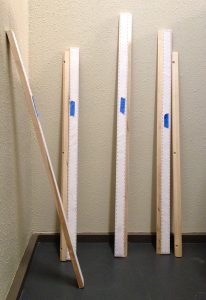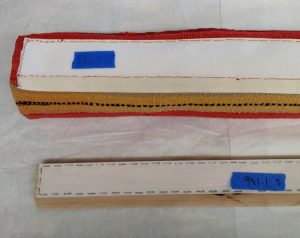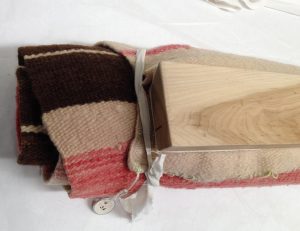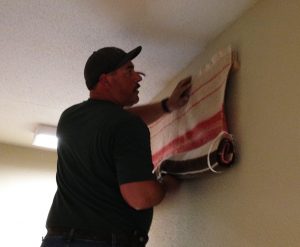
Wood cleat hardware
With fabrication complete for the wood cleat mounting hardware and sewing complete on the textiles, it was time to install the hardware and textiles. Tom Worley from Facilities Services had fabricated the mounting hardware and continued to work with us on this part of the project. We did a test run of the mounting hardware with the textile that would hang on the mezzanine level, where installation was easily within reach. It worked perfectly.

Installing the cleats
Tom set up the ladder in the stairwell and installed the wood cleats on the facing walls of the upper part of the stairwell, taking care to center and level the cleats.

Velcro loops and hooks
Next came the textiles. The portion of wood mounting hardware with Velcro hooks attached with stainless steel staples was attached to the Velcro loop/cotton twill sewn onto the textiles.

Textile rolled and ready to hang
The textiles were rolled and tied with cotton muslin.

Inserting mounting hardware into wood cleat
I handed the rolled textile to Tom at the top of the ladder. He inserted the wood strip into the wood cleat and then carefully unrolled the textile.

Unrolling the textile
The textile looked great and we hung the second textile. Tom moved the ladder to the lower part of the stairwell where we repeated the process, installing the cleats on the two facing walls of the stairwell before hanging the two remaining textiles. We are grateful for Tom’s care, assistance, and attention to detail on this project.

